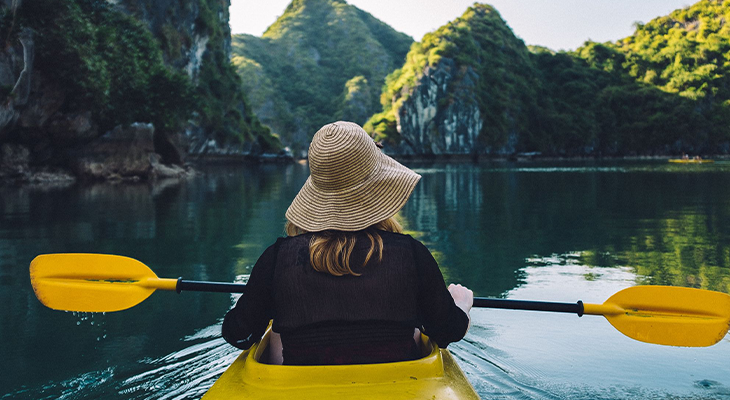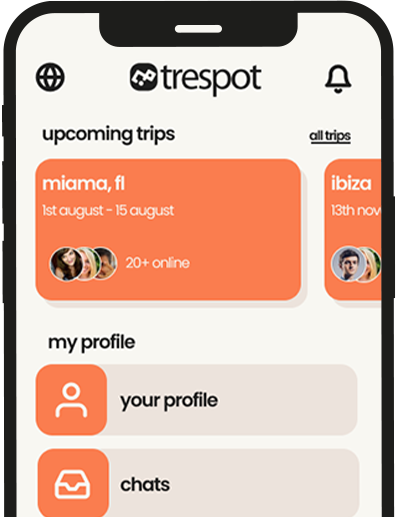Introduction
If you’re searching for stuff to do by yourself, you’re in good company. More people are embracing chosen solitude—not loneliness, but the freedom to explore interests on your own schedule, at your own pace. Research-informed guides note that alone time can strengthen creativity, self-knowledge, and overall well-being, especially when you pick activities that match your energy and comfort level . Therapist-backed tips show that tiny, low-pressure steps make solo outings feel natural fast.
This mega-guide curates truly useful stuff to do by yourself—from cozy at-home rituals and creative projects to outdoor micro-adventures, travel-style day trips, and skill-building quests. You’ll get mindset shifts, budget tiers, safety checklists, and plug-and-play mini itineraries. We also add twists most listicles skip: third-place strategies, volunteering for connection, and ways to quietly join communities without losing independence. Whether you’re a traveler between trips, a meetup regular, or craving a personal reset, here’s your practical, confidence-building solo playbook.
1) The Solo Mindset: Chosen Solitude, Not Loneliness
Before picking stuff to do by yourself, reframe alone time as chosen solitude. Loneliness is unwanted isolation; solitude is intentional and restorative. Start gentle: 30–60 minutes in a familiar place with one small reward (a pastry, a scenic bench). You’ll quickly find which type of solo time you prefer—creative, active, reflective, or exploratory.
- Low-stakes venues: weekday matinee, quiet cafe, neighborhood gallery.
- Micro-goals: stay one hour, try one new thing, jot three observations.
- Comfort anchors: headphones, a book, and a simple “no thanks” script.
Unique insight: Treat solo time like strength training. Reps matter—start indoors (journaling, cooking), then step into public spaces (galleries, hikes). Confidence compounds.
2) Quick-Start Framework: The 3-Layer Solo Plan
Most lists dump 100 ideas on you. This framework turns them into action—any day, any city:
- Layer A — Anchor (10–30 min): a guaranteed win (favorite coffee, playlist, short walk).
- Layer B — Feature (60–120 min): your “new” thing (museum, class, trail, photo walk).
- Layer C — Treat (15–30 min): end ritual (dessert, sunset viewpoint, journaling).
Pro move: keep a “solo go-bag” (charger, ID, transit card, pen). Tiny friction drop = big follow-through.
3) At-Home Comfort Lab: Creative, Cozy, Restorative
Testing stuff to do by yourself at home? Build a mini retreat.
Creative & Cozy Options
- Solo date ideas at home: cook a regional dish, set a restaurant-style table, mix a mocktail, watch a director’s commentary cut.
- Creative hobbies for one: watercolor postcards, beginner calligraphy, a simple knitting project.
- Mindful solitude: guided breathwork, a 10-minute stretch, and a gratitude list—practical reframes support mood and contentment.
Free / Low-Lift Ideas
- Declutter one drawer (a “micro-zone”).
- Create a Sunday playlist; print a tiny weekly photo zine.
Unique insight: Stack rituals: pair a must-do (laundry) with a want-do (language app or documentary). You’ll actually look forward to it.
4) City & Outdoor Micro-Adventures (Beginner to Bold)
Beginner
- Photo walk: pick a theme (doors, bikes, murals).
- Park picnic + chapter challenge: read 10 pages before checking your phone.
- Neighborhood quest: taste-test samosas/tacos/espresso at three spots.
Intermediate
- Museum + hidden-cafe hop.
- River trail cycle (one-hour rental).
- Sunset lookout sketching or journaling.
Bold (with safety)
- Intro trail hike: choose an easy, marked route; tell someone your plan; go in daylight; carry water, layers, and a map—see solo hiking primers for confidence and safety basics.
Unique insight: Turn errands into micro-adventures: take the long route via a mural street, pop into a museum foyer for 10 minutes, or detour to a viewpoint.
5) Culture & Curiosity: Museums, Libraries, Live Events
Cultural time is elite stuff to do by yourself because you can linger where you want.
- Museums & galleries: try the “3-piece rule”—go deep on just three works.
- Libraries & indie bookstores: attend a free author talk; start a “first pages” ritual.
- Live events: weekday matinees, open-mics, orchestra rehearsals, local sports in the nosebleeds (binoculars FTW).
Big listicles love these low-pressure ideas for a reason—they’re fun, affordable, and solo-friendly.
Unique insight: Keep a ₹/$/€ 10–20 curiosity budget for spontaneous chapbooks or last-minute tickets.
6) Fitness & Wellness: Body, Breath, and Mood
- Class sampler: try drop-in yoga, dance basics, bouldering intro, or rowing.
- Breath + walk: five-count box breathing, then a 30-minute brisk loop.
- Green hour: one hour outdoors weekly can support mood and stress relief; beginner hiking guides help you start safely.
Therapist tips: pick less intimidating venues, prep logistics (route, ticket, parking), and bring a “comfort prop” (book/headphones) until solo time feels natural.
Unique insight: Track solo sessions like workouts. Seeing streaks (even 10 minutes) builds identity: “I invest in stuff to do by yourself—and I feel better for it.”
7) Skill-Building & Learning Sprints
- 7-day micro-course: typing speed, photography basics, or knife skills.
- Maker mini-goal: finish one object (clay cup, linocut print) by Sunday.
- Language ladder: 10 phrases per day + one cafe order in that language on day 7.
- Volunteer hour: food bank sorting or trail cleanup—solo contribution, real connection.
Solitude nurtures creativity and reflection—core to skill growth.
Unique insight: Create a “badge board.” Print tiny certificates or use stickers for each completed sprint to keep momentum visible.
8) Social (But Solo): Third Places & Low-Pressure Connection
- Third places: cafe corners, climbing gyms, makerspaces, community gardens.
- Low-talk activities: pottery studio day passes, coworking day tickets, board-game cafes (solo puzzle tables exist!).
- Soft entry: public lectures, gallery openings, run-club beginners’ nights—give yourself permission to leave at 30 minutes.
Unique insight: Try “peripheral participation.” Watch first (salsa, figure drawing), join the week after. Two-step entry lowers pressure.
9) Budget Tiers: Free, Low-Cost, Worth-the-Splurge
Free
- Park sketching, photo walks, library events, sunrise viewpoints, podcast “university.”
Low-Cost
- Museum free days, matinee tickets, rental bikes, single-class passes, day-trip buses.
Splurge-Worthy
- Chef’s counter seating for one, premium exhibit nights, guided beginner workshops, last-minute orchestra seats.
Popular roundups feature many of these affordable wins for soloists.
Unique insight: Auto-transfer a small weekly amount into a Solo Fund to spark spontaneous yeses.
10) Safety & Confidence Toolkit
- Share your plan: text destination and return time to a friend; use live location when useful.
- Daylight bias: new soloists should favor daylight starts and busy venues.
- Basics kit: ID, small first-aid, water, snack, battery pack; paper map for trails.
- Trail sense: marked paths, check weather, turn around early.
- City smarts: sit near staff, wear cross-body, prep a short “no thanks” script.
Unique insight: Plan two “exit tokens” (to-go coffee, nearby bus stop). Knowing you can bail reduces anxiety and increases action.
11) Weekend Mini-Itineraries
Use these tables to assemble reliable, confidence-building stuff to do by yourself.
A) 2-Hour Solo Reset
| Anchor | Feature | Treat |
|---|---|---|
| Favorite coffee to-go | Photo walk: capture 10 unique doors | Buy/borrow a chapbook |
B) Half-Day “Culture + Nature” Mix
| Anchor | Feature 1 | Feature 2 | Treat |
|---|---|---|---|
| Park stretch (10 min) | Gallery (3-piece rule) | Riverside walk (30 min) | Bakery slice |
C) Full-Day Micro-Adventure
| Anchor | Feature (AM) | Feature (PM) | Treat |
|---|---|---|---|
| Sunrise viewpoint | Easy marked trail (turn back early) | Museum free hour | Solo dinner counter seat |
12) Seasonal Solo Bundles
- Spring: botanical garden sketching, vintage market hunt, first picnic.
- Summer: sunrise swim, open-air cinema, evening bike loop.
- Autumn: foliage photo project, soup-making afternoon, museum late-night.
- Winter: matinee + ramen crawl, indoor climbing intro, letter-writing cafe session.
Seasonal clustering makes acting on stuff to do by yourself easier and more fun.
Quick Takeaways
- Start with chosen solitude—a confident, compassionate mindset.
- Use the 3-Layer Solo Plan to turn ideas into action.
- Mix home rituals, culture, and micro-adventures for varied stuff to do by yourself.
- Keep a Solo Fund and a go-bag to reduce friction.
- Practice safety basics (share plan, daylight, marked routes) for more freedom.
Conclusion
The most effective path to fulfilling stuff to do by yourself is to start small and repeat often. Choose a vibe (cozy, active, curious), pick an Anchor–Feature–Treat combo, and step out—today if you can. Evidence suggests chosen solitude strengthens creativity and well-being; therapist tips show low-pressure reps build comfort quickly.
Weave solo moments into your week: an at-home “date,” a library drift, a gallery stop, a beginner trail. You’ll notice an identity shift—you’re someone who invests in your energy, skills, and curiosity. Keep a running list, feed your Solo Fund, and treat safety planning as a friendly ritual. Celebrate each micro-win—another page read, another viewpoint reached, another conversation you had with yourself. Your calendar will soon brim with meaningful stuff to do by yourself, and your confidence will compound.
FAQs — Stuff to Do by Yourself
Cafe + short walk + bookstore browse. Bring a book or headphones as a comfort prop—therapists recommend this for early outings [3].
Themed dinner + documentary, a one-drawer declutter, watercolor postcards, or guided stretching—popular listicles highlight these for good reason [1].
Try a gallery “3-piece rule,” then a counter-seat dinner. The “date yourself” approach reframes the outing as a treat, not a test [2].
Chosen solitude differs from loneliness and can boost creativity, focus, and contentment—balance solo time with relationships you value [4].
References
- Parade — 101 Fun Things To Do by Yourself
- The Good Trade — 60+ Solo Date Ideas
- TIME — How to Get Better at Doing Things Alone
- Verywell Mind — Benefits of Being by Yourself
- Healthline — How to Be Happy Alone
- BuzzFeed — 33 Things to Do by Yourself
- SELF — Beginner Hiking Guide
- Condé Nast Traveler — How to Hike Alone (Safely)
- Wikipedia — Solitude
We synthesized overlapping advice from reputable publications and communities to create this practical solo activity playbook.
Join the Conversation
We’re building the web’s most practical library of stuff to do by yourself. What 2-hour solo loop will you try this week—and why that one? Share your plan (and pics!) with the travel community or drop ideas we should test next.



